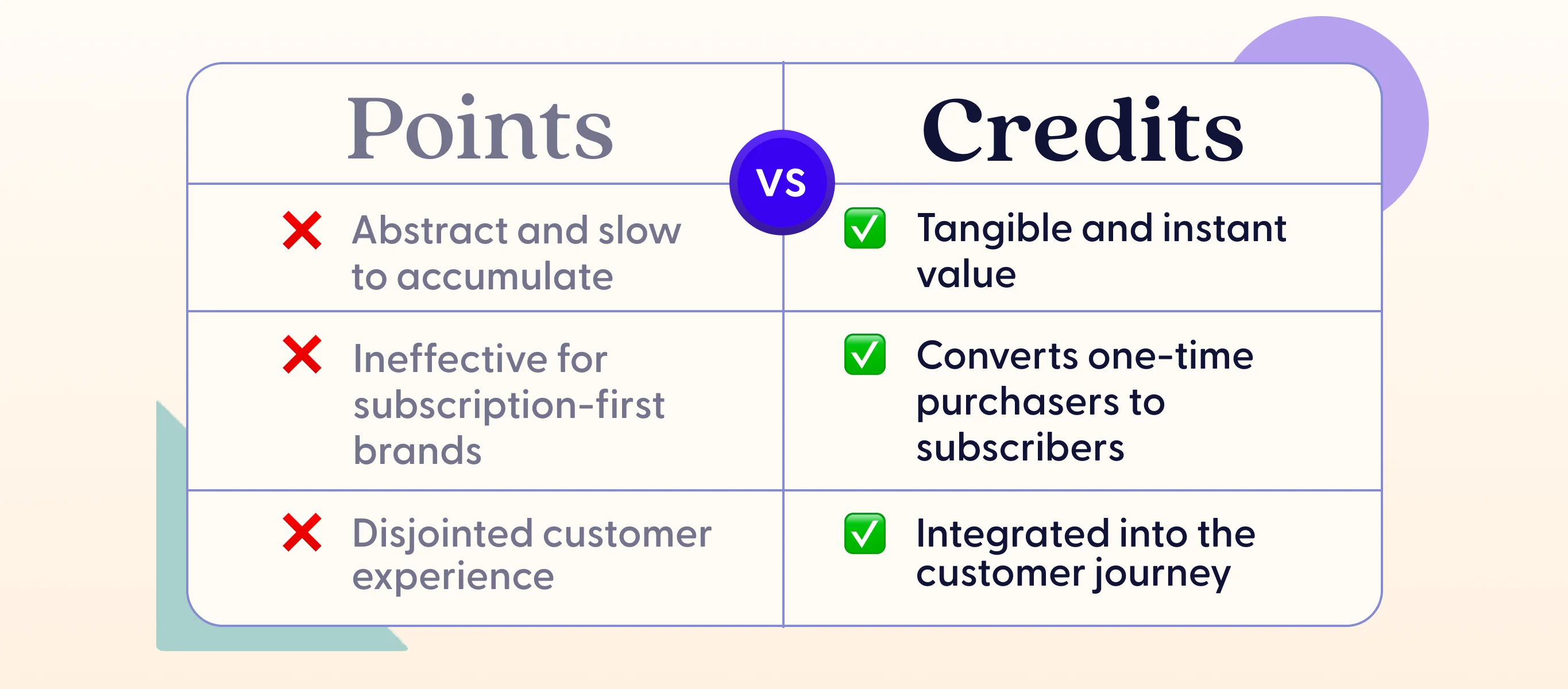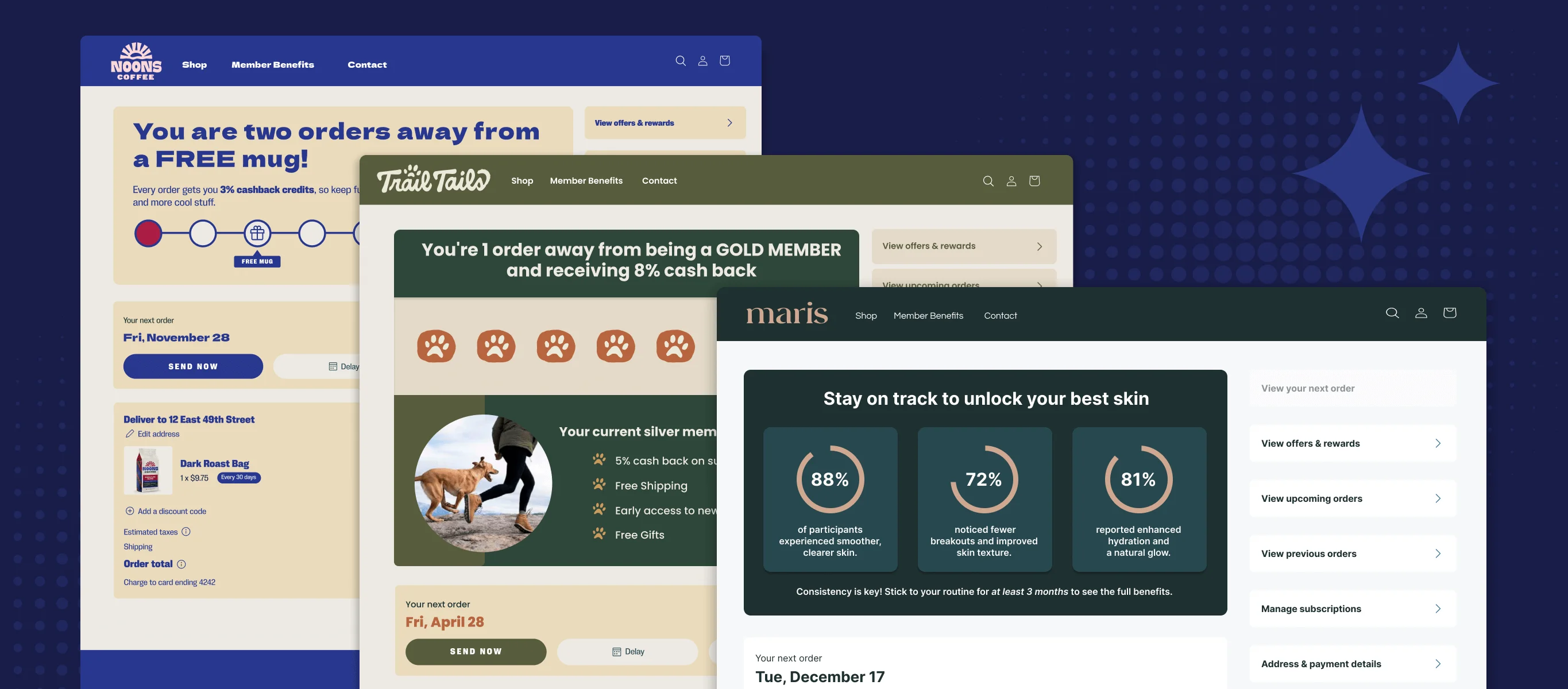Do you like receiving gifts with a purchase? What about when you get free shipping on an online order? Or earn points when you take a flight with your preferred airline? All of these benefits are actually loyalty program tactics that businesses use to retain you as a customer—and get you to spend more money with them.
If you’re a business owner considering the merits of enabling a loyalty program, this post will show you all the reasons why it’s an excellent idea. Not only are there a myriad of benefits for your company when you start a loyalty program, but your customers will win too.
Let’s dive into the different kinds of loyalty programs out there, the benefits of creating one, and how you can get started.
Key takeaways
- Creating a loyalty program is an excellent way to build customer loyalty while increasing LTV.
- The best rewards programs are personalized and motivate customers to spend.
- Enjoy increased customer retention and a solid customer base when you create a loyalty program.
What is a customer loyalty program?
In simple terms, a customer loyalty program is a marketing strategy for recognizing and rewarding customers that purchase or engage with your brand frequently. There are a variety of customer loyalty programs—from tiered loyalty to points to cause-based. Choosing the right one for your business will require knowledge of how each one functions, as well as the benefits of enabling them.
With customer loyalty programs, shoppers are rewarded for making purchases, referring friends, and otherwise engaging with your business. The more customers buy, the more they are rewarded, making loyalty programs a delight for both the customer and the business. Plus, a whopping 75% of consumers say they favor companies that offer rewards.

As mentioned, there are a number of different models for customer loyalty programs. Creating a successful loyalty program will mean choosing the right one for your business—which type of program will your existing customers enjoy? What might attract new customers to your business? Discover the different kinds of loyalty programs next.
Different types of customer loyalty programs
Building customer loyalty is made easier with these loyalty program models. When customers spend, they earn rewards. Or, in the case of cause-based loyalty, when customers spend, they help a worthy cause that the company has identified.
However your customers are motivated, a loyalty program is sure to entice them to spend more money with your brand and make them feel like a part of something bigger.
1. Point-based loyalty programs
The most popular type of loyalty program by far—and probably the one you are most familiar with—is the point-based customer loyalty program. Many credit card companies utilize this model, where shoppers earn points for every dollar they spend. Customers can accumulate and redeem points for free gifts, perks, and other rewards.
Loyalty club members can also earn points for hitting brand-specific milestones, celebrating a birthday, writing a review, and sharing content on social media. Additional points may even be earned through customer referrals—brands do well to reward their customers for sharing their products or services with friends and family. Referral programs are an excellent way to gain new customers and give rewards points to those existing ones who are engaging with your brand.

2. Tiered loyalty programs
Some of the best customer loyalty programs also incorporate a tiered system. This type of loyalty model rewards customers depending on their rank. Customers earn rewards and move up in rank based on sales or engagement (the exact metric can be chosen by the online store).
With tiered loyalty, customers have a goal they are working towards—meaning even more incentive to stay with your brand. When shoppers know that if they spend a little more money or make a few more purchases, they’ll be rewarded, they are more likely to stay loyal to your business. The higher their tier, the bigger their reward.
3. Cause-based loyalty programs
A cause or value-based loyalty program is a way to deepen your connection with customers by sharing your mission and offering opportunities to give back. Many customers are looking for this commitment from brands—either to the environment, or to other social justice causes they also believe in.
By creating a cause-based loyalty program, you can give shoppers the chance to donate money to charities that align with your brand values. A percentage of your purchases will go directly to this cause, making shoppers feel good about spending money with your online store. Though it’s not technically a way of giving rewards, cause-based loyalty increases customer loyalty by uniting around a cause for the common good. You will earn respect from customers with this initiative to give back.

Why is customer loyalty so important?
You might be asking yourself, is it really that important to reward customer loyalty? Why does it matter if people are already purchasing from my brand?
The answer comes down to this: You can retain customers for life when you create a community around your brand.
A loyalty program is just one part of this equation. By making your customers feel valued and rewarded, you create loyal customers for life—and usually get free word-of-mouth marketing thanks to these steady shoppers. Additional ways to create a brand community include:
- Sending out a newsletter
- Creating an online community space where your loyal fans can connect
- Sharing your mission statement
- Making the customer experience memorable
- Interacting with community members on social media
- Sharing user-generated content
3 benefits of adopting loyalty programs for your business
So why are loyalty programs so important? Because an effective rewards program can benefit your business in big ways. Not only can a loyalty program assist you in reducing churn, but it can also help increase the amount of money customers are spending over their lifetime. Most importantly, it creates brand loyalty—an invaluable aspect of owning and operating a successful business.
1. Increase customer retention
One of the biggest challenges merchants face is how they can best reduce churn and retain customers. A rewards program can help with that. Loyalty members stay engaged with your business—they track their loyalty points and spend money at your online store in order to reach their next incentive.
Shoppers today are looking for more ways to engage with brands they buy from—whether that’s through social media, a community forum, or a rewards program. By engaging with customers and encouraging repeat purchases, you are actively working to increase your customer retention rate and build a strong brand community.
2. Increase lifetime value
Customer loyalty program benefits include providing your business with financial advantages. Of course, retaining more customers will help your overall bottom line. But when these existing customers spend more with your store, you’ll also increase their lifetime value (LTV).
As defined in our ecommerce glossary, lifetime value is “a key metric that measures the average amount a person spends with a business throughout their customer lifespan, or the amount of revenue a business can expect from the average customer.” When LTV is examined alongside customer acquisition costs (CAC), your business can better understand gross margin and net profit.
Merchants that reward customer loyalty create valuable customers—ones that will stay with your business and spend more than regular customers would. An effective rewards program will help you increase LTV and influence your customers’ shopping habits.
3. Create brand advocates that increase brand awareness
This last one might seem obvious, but it’s a huge benefit of loyalty programs that shouldn’t be overlooked. You have the opportunity to gain brand advocates when you implement a loyalty rewards program—meaning you can count on these customers to share your brand.
Whether they create content around your products to share on their social media channels, or simply tell their friends about how much they love your brand, their loyalty is a major benefit to your business. Loyalty programs can naturally help you as a merchant create a strong, devoted customer base, with new and existing customers.
Starting a customer loyalty program
Ready to get started with a loyalty program of your own? Now that you’re aware of the benefits of rewards programs and the different types of loyalty programs available, it’s time to create your own unique loyalty rewards program. Here are a few simple steps you can take to get your loyalty program up and running:
- Identify a loyalty app to utilize (browse our Tech Partners directory to spark your search)
- Name your rewards program
- Make earning instructions simple and clear
- Offer a variety of rewards and ways to earn
- Engage customers to share how they’re earning points
Enable your customer loyalty program today and start seeing the benefits.
Sources
[1] 40 Amazing Customer Loyalty Statistics in 2022 (smallbizgenius)
[2] How to build a genuine brand community (Recharge)
[3] Lifetime value (Recharge ecommerce glossary)
[4] Tech Partners directory (Recharge)



